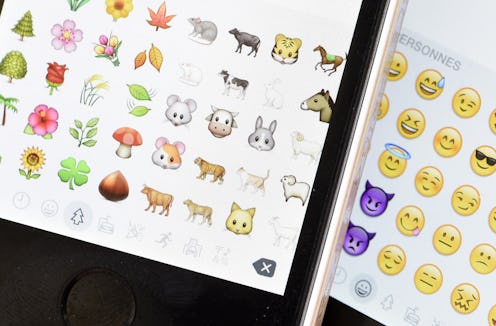On Thursday, the Unicode Consortium approved a breastfeeding emoji, along with 55 other new emojis. The breastfeeding emoji has garnered particular excitement, not only because it will allow women to visually depict an activity in which many of them engage regularly, but also because it could help reduce the social stigma around breastfeeding.
The emoji subcommittee of the Unicode Consortium is tasked with approving new emojis, which are based on proposals that people submit to the Consortium. The breastfeeding emoji proposal was submitted by Rachel Lee, a nurse at the University College of London Hospital. Lee argued that the pervasiveness of breastfeeding around the world means that it is a common thread that many women share, and, as such, it should be an activity that is depicted by an emoji. In her proposal advocating for the addition, Lee said:
The lack of a breastfeeding emoji represents a gap in the Unicode Standard given the prevalence of breastfeeding in cultures around the world, and throughout history.
While Lee submitted the official proposal to the Consortium, she was certainly not the one advocating for a breastfeeding emoji. In fact, according to Emojipedia, an online "emoji encyclopedia," which meticulously documents emojis and their updates, the breastfeeding emoji was among the top 30 most-requested emojis in 2016 by Emojipedia users.
In addition to allowing breastfeeding mothers to more aptly capture the process of breastfeeding via text, email, Facebook posts, and the like, the addition of a breastfeeding emoji may even help reduce the still-persistent stigma around breastfeeding. Unfortunately, breastfeeding in public is still perceived as taboo in many places; at a minimum, people often appear uncomfortable with the notion, or, at the more extreme end of the spectrum, women are sometimes even openly chided or harassed for breastfeeding their child in a public setting.
Hopefully, the introduction of the breastfeeding emoji can help counter some of this stigma and related discomfort and criticism by visually exposing more people to the notion of breastfeeding via electronic mediums — this will perhaps eventually render it something that is seen as ordinary and nurturing as opposed to taboo and discomforting. Indeed, just like advertising helped normalize and popularize bottle feeding and baby food (and stigmatize breastfeeding), perhaps the breastfeeding emoji can do the same by "advertising" the normalcy of the activity via electronic communications exchanged between people.
Lee, the woman who submitted the original emoji proposal, is hesitant to overstate the possible ramifications of the emoji, saying:
I am under no delusion that creating a small emoji to exist in this society may not be the real push to normalize breastfeeding in public forums. ... But if it helps just get the message out there by creating discussion and gathering support, then it’s all worth it.
Only time will tell just how far-reaching the implications of the breastfeeding emoji will be; unfortunately, we have to wait a bit longer to begin using the emoji, as it's earliest possible release date is summer 2017. However, rest assured many women anxiously await its arrival, as it is something that allows them to better capture and document their own experiences.
